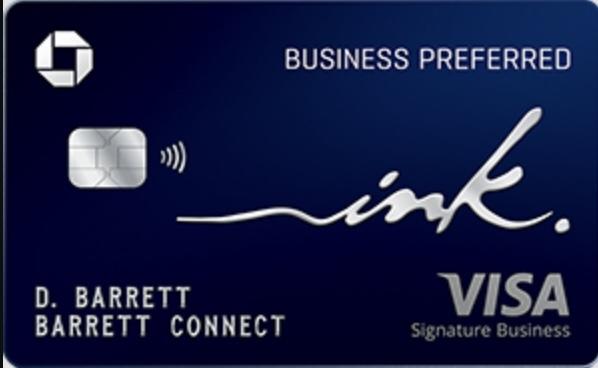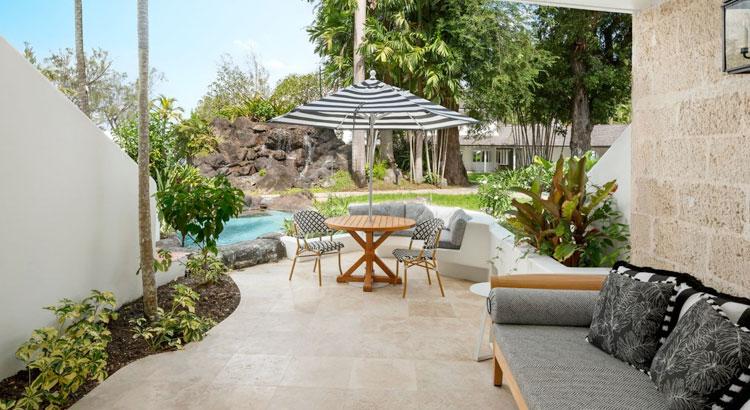Last-Minute Upgrades: How to Snag a Better Seat This Holiday Season
Your Ultimate Guide to Flying Comfortably During Peak Travel Times

The holiday season is upon us, and so is the annual rush to book flights for festive getaways. According to the Transportation Security Administration holiday travel statistics, millions of travelers take to the skies during this period, making it one of the busiest times of the year for air travel.
With airports bustling and flights filling up quickly, the prospect of being squeezed into a cramped seat on a long journey is less than appealing. But what if you could snag a last-minute upgrade and enjoy a more comfortable trip without breaking the bank? In this comprehensive guide, we’ll explore proven strategies, insider secrets, and expert tips on how to secure a better seat—even at the eleventh hour. Whether you’re a seasoned traveler or flying for the first time in years, these insights can help transform your holiday travel experience.
Understanding the Upgrade Landscape

First, it’s essential to understand how airlines handle seat upgrades in today’s travel climate. Gone are the days when dressing sharply or simply asking politely would land you in first class. Over the past decade, airlines have significantly changed their upgrade policies, largely due to the financial benefits of selling premium seats.
Airlines prioritize upgrades for frequent flyers with elite status, passengers willing to pay with cash or miles, and occasionally, those who hold co-branded airline credit cards. Free upgrades are increasingly rare, and relying on luck is unlikely to yield results during the peak holiday travel season. Most upgrades are allocated well before the flight departs. Airlines use sophisticated revenue management systems to maximize profits, carefully controlling the availability of premium seats.
Frequent flyers often have first dibs, and airlines employ complex algorithms to determine who gets an upgrade based on loyalty status, fare class, and even booking channel. Understanding this landscape is crucial to formulating an effective strategy for securing a better seat. For a deeper dive into how airlines prioritize seat upgrades, check out this Comprehensive Guide to Airline Upgrade Policies and Strategies.
It’s also important to manage expectations. While moving from economy to first class might be a stretch, especially during busy travel periods, there are still opportunities to enhance your travel experience. Paid upgrades to more comfortable seats, such as premium economy or economy plus, are more feasible and can make a significant difference in comfort. Additionally, some airlines offer seats with extra legroom or preferred locations within the aircraft for a nominal fee. Knowing where to look and what to ask for can open up options you might not have considered.
Finally, separating myths from reality can save you time and effort. The idea that one can simply charm their way into a better seat is largely a myth. Airline staff have limited discretion when it comes to seat assignments, and policies are strictly enforced. Instead, focusing on concrete strategies will improve your chances of an upgrade. Familiarize yourself with the airline’s specific upgrade procedures by visiting their official site or reading Airline-Specific Upgrade Procedures and Tips for tailored advice.
Strategies for Last-Minute Upgrades

One of the most direct ways to secure an upgrade is by checking for paid options immediately after booking. Airlines sometimes offer upgrade deals during this window, and acting swiftly can land you a better seat at a reasonable price. Make sure to regularly check your booking through the airline’s website or mobile app. Some airlines provide notifications of available upgrades via email or within their apps. Setting up alerts or subscribing to notifications can ensure you don’t miss these opportunities.
For a step-by-step guide on how to monitor and secure upgrades, refer to this Step-by-Step Guide to Checking for Airline Seat Upgrades Post-Booking. Frequent flyer programs are another avenue to consider. Even if you don’t have elite status, accumulating miles can open doors to upgrade options. Use your airline miles or credit card points to upgrade an economy ticket. Make sure to verify that your ticket class is eligible for upgrades, as some restrictive fares, like basic economy, are typically excluded.
Additionally, consider joining multiple frequent flyer programs if you travel with different airlines. This can increase your flexibility and opportunities for upgrades. For more information on maximizing your miles, read this article on Maximizing Frequent Flyer Miles for Seat Upgrades. Arriving at the airport earlier than usual can also enhance your chances. Check in online 24 hours before your flight, and get to the airport 1 to 1.5 hours early (or even earlier for international flights). This timing can be critical, as gate agents may have more flexibility to accommodate upgrade requests when things are less hectic.
Early arrival also gives you the chance to inquire about standby upgrade lists, which some airlines offer on a first-come, first-served basis. Don’t hesitate to inquire politely at check-in, the gate, and even onboard about available upgrades. While free upgrades are rare, there might be paid options available that weren’t earlier. Being courteous and expressing genuine interest can sometimes make a difference. If you’re celebrating a special occasion, such as a honeymoon or anniversary, it doesn’t hurt to mention it—but manage your expectations accordingly. For advice on how to approach airline staff effectively, see Best Practices for Requesting Airline Seat Upgrades from Staff.
Expert Tips from Seasoned Travelers

Travel expert Gabby Beckford emphasizes booking flights during less popular times to increase the likelihood of available upgrade seats. Off-peak flights tend to be less crowded, which can work in your favor when seeking an upgrade. Additionally, Beckford suggests joining airline frequent flyer programs, even if you don’t fly often, as this can boost your priority status marginally over non-members.
Chelsea Dickenson, another savvy traveler, popularized the “check-in chicken” strategy. This involves delaying your check-in to increase the chance of being automatically assigned a better seat, like those with extra legroom or in exit rows. By waiting until most passengers have selected their seats, you may end up with a more desirable spot by default. However, this tactic carries risks, such as being bumped from an overbooked flight, and is less effective on U.S. airlines. For a detailed explanation of this strategy and how to implement it safely, refer to this Guide to the ‘Check-In Chicken’ Strategy for Seat Upgrades.
Both experts agree that flexibility and politeness are key. Traveling solo can increase your upgrade chances, as it’s easier to accommodate one person than a group. Always approach airline staff with courtesy, as they are more inclined to assist friendly passengers. Additionally, maintaining a professional and respectful demeanor can set you apart in a positive way. For more insights from industry veterans, explore these Expert Travel Tips for Securing Last-Minute Seat Upgrades.
Lastly, staying informed about airline policies and being proactive in your approach can set you apart from other passengers vying for upgrades. Subscribing to airline newsletters, following their social media accounts, and checking travel blogs can provide timely information about upgrade opportunities. Knowledge is power, and being the first to know can give you an edge.
Utilizing Credit Cards and Rewards Programs

Airline credit cards can offer significant benefits, including complimentary upgrades and priority boarding. Consider applying for a card associated with the airline you frequently use. These cards often come with perks like free checked bags, lounge access, and the occasional upgrade opportunity. Some premium travel rewards cards even offer annual travel credits, airport lounge memberships, and elite qualifying miles that can boost your status quickly. For a comparison of the best cards, see Top Travel Credit Cards Offering Airline Seat Upgrades and Perks.
Leverage your credit card points or rewards to upgrade your seat. Many credit cards allow you to transfer points to airline partners, which can then be used for upgrades. Some cards also provide travel portals where you can book flights using points, often at favorable rates. Programs like Chase Ultimate Rewards, American Express Membership Rewards, and Citi ThankYou Points offer flexible redemption options that can be valuable for securing upgrades.
If you have friends or family members with elite status, they might be able to help. Some airlines allow elite members to share their benefits or upgrade certificates with others. It doesn’t hurt to ask if they can assist with your upgrade quest. Just be sure to check the airline’s policies on transferring or sharing benefits. For more details, read How to Leverage Friends and Family Elite Status for Your Own Seat Upgrades.
Always keep an eye out for airlines offering bidding systems for upgrades. This approach allows you to name your price for an upgrade, and if accepted, you can enjoy a better seat for less than the standard cost. Airlines such as Qantas Bid Now Upgrades, Virgin Atlantic Upgrade Auctions, and Hawaiian Airlines Bid Up offer these types of programs. Participating in bidding systems can be a cost-effective way to move up to a better class.
Alternative Options for Enhanced Comfort

Sometimes, the most straightforward solution is to pay for a premium seat. Airlines like Delta offer Comfort+ seats, while American Airlines has Main Cabin Extra. These seats provide extra legroom and other perks, such as earlier boarding and dedicated overhead bin space. The cost is often significantly less than a business or first-class ticket, providing a comfortable compromise. For a full list of airlines offering enhanced economy options, check Airlines with Premium Economy and Extra Legroom Seating Options.
Budget-friendly airlines like JetBlue, Spirit, Breeze, and Alaska Airlines have their own versions of premium seating at reasonable prices. For example, JetBlue’s Even More Space seats offer up to seven inches of extra legroom and early boarding privileges. Similarly, Spirit’s Big Front Seat offers a wider seat and extra legroom, rivaling the comfort of first class on some airlines but at a fraction of the price.
For longer flights, upgrading to premium economy might be worth the investment. Premium economy offers enhanced comfort features, such as wider seats, increased recline, and improved meal service. While more expensive than standard economy, it can provide a much more enjoyable experience on long-haul flights. Airlines like British Airways Premium Economy, Singapore Airlines Premium Economy, and Lufthansa Premium Economy have been praised for their offerings in this class.
Before making a decision, compare the costs and benefits of these options. Sometimes, the price difference is minimal, but the increase in comfort can significantly enhance your travel experience. Utilize comparison tools like SeatGuru Seat Comparison Tool to evaluate seat dimensions and amenities across different airlines and aircraft.
Bidding and Purchasing Upgrades

As your travel date approaches, airlines may offer discounted upgrades to fill premium seats. Keep checking your reservation online, and watch your email for any upgrade offers. These deals can sometimes be quite attractive, allowing you to enjoy premium class amenities without paying the full price. Programs like Delta’s Upgrade with Miles, United’s Upgrade Strategy Guide, and American Airlines Systemwide Upgrades can provide avenues for upgrading your seat using miles or cash.
Bidding for upgrades is another option some airlines provide. You can place a bid for the amount you’re willing to pay for an upgrade, and if accepted, you’ll be notified before your flight. This system can be a gamble, but it offers the potential for significant savings. For an overview of airlines that offer upgrade bidding and tips on how to bid successfully, see Airline Upgrade Bidding Systems Explained and Strategies for Success.
Always ensure that your ticket is eligible for upgrades before attempting this strategy. Some tickets, especially those purchased through third-party sites or at deeply discounted rates, may have restrictions. Review the fare rules associated with your ticket, or contact the airline directly if you’re unsure. Understanding these details can save you from disappointment and help you plan accordingly.
Monitoring the seat map can also give you an idea of availability. If there are many unsold seats in premium cabins close to departure, the chances of last-minute upgrade offers increase. Tools like ExpertFlyer Seat Alerts allow you to set notifications for when desirable seats become available. Staying vigilant can pay off when opportunities arise.
Traveling Off-Peak and Booking Strategies

Flying on weekends can sometimes result in lower business class fares, as demand from corporate travelers drops. According to industry observations, business class fares can decrease by 15-20% on weekends. If your schedule allows, consider this timing to take advantage of better pricing. For more insights on fare patterns, check out the Best Times to Book Flights for Affordable Business Class Tickets.
Booking your flights well in advance—ideally three to four months before departure—can also lead to better deals on premium seats. Early bird fares often include promotions or discounts that are not available closer to the travel date. Airlines sometimes offer limited-time sales on business or first-class tickets during certain periods. Staying informed about these promotions by subscribing to airline newsletters or using fare alert tools can help you capitalize on these deals.
Subscription services like Going Elite, Scott’s Cheap Flights, and Secret Flying offer alerts for mistake fares and significant price drops on premium cabins. Joining such services can give you a competitive edge in finding affordable upgrades. These platforms often have teams dedicated to scouring the internet for the best deals and can save you considerable time and money.
Hiring a travel agent is another option. Agents sometimes have access to exclusive deals and can negotiate on your behalf. They can provide personalized advice and assist with complex itineraries where upgrades might be more challenging to secure on your own. For guidance on selecting the right travel agent, see How to Choose a Travel Agent for Premium Flight Bookings.
Considering Flight Occupancy

Choosing flights that are less likely to be full can increase your chances of an upgrade. Check the flight occupancy through the airline’s booking system. Flights during off-peak hours or less popular routes often have more availability in premium cabins. Using tools like FlightAware or Seat Maps on ExpertFlyer can help you gauge seat availability before booking.
Airlines occasionally release last-minute award space for first and business class seats as the departure date nears. They aim to fill unsold seats without affecting ticket sales. Airlines like Lufthansa, United, and British Airways are known for this practice, sometimes releasing availability within weeks or even days before departure. Keeping an eye on award availability through websites like AwardHacker or Point.Me Award Search can help you spot these opportunities.
Dynamic pricing and fuel surcharges can affect the total cost of these upgrades, so it’s important to consider the overall value. Stay informed about the airline’s policies and be prepared to act quickly when opportunities arise. For a detailed explanation of how fuel surcharges and taxes impact award bookings, refer to Understanding Airline Fuel Surcharges and Taxes on Award Tickets.
Flexibility with your travel dates and times can also help. Being willing to adjust your plans slightly could open up more options for upgrades. Sometimes flying a day earlier or later, or choosing a flight with a layover, can significantly increase your chances of securing a premium seat. For strategies on flexible travel planning, see How Flexibility Can Lead to Better Flight Deals and Upgrades.
Politeness and Flexibility Go a Long Way

Never underestimate the power of politeness. Airline staff deal with stressed and irate passengers regularly. Approaching them with courtesy and understanding can make you stand out—in a good way. A friendly demeanor might not guarantee an upgrade, but it certainly won’t hurt your chances. For real-life stories of kindness leading to travel perks, check out Heartwarming Stories of Airline Staff Going the Extra Mile.
Traveling alone is another factor that can improve your odds. It’s easier for airlines to accommodate a single passenger in an available premium seat than a group. If you’re flying solo, your flexibility could work in your favor. Additionally, being open to accepting an upgrade with conditions—such as moving to a different seat or taking a later flight—can be advantageous.
Volunteering your seat on an oversold flight might also pay off. Airlines often compensate volunteers with vouchers, miles, or even upgrades. If you have the flexibility to take a later flight, this could be a viable strategy. For tips on how to maximize benefits when volunteering, read Strategies for Volunteering on Overbooked Flights.
Finally, always check the airline’s upgrade policies. Understanding the rules and procedures can help you navigate the system more effectively and identify opportunities that others might miss. Familiarize yourself with terms like “operational upgrade” and “bump,” and know how to leverage them to your advantage. For a comprehensive glossary of airline upgrade terms, visit Airline Upgrade Terminology and What It Means for You.
Final Thoughts

Securing a last-minute upgrade during the holiday season is challenging but not impossible. By combining strategic planning with flexibility and courtesy, you can enhance your chances of enjoying a more comfortable flight. Utilize your frequent flyer programs, credit card benefits, and be proactive in seeking out opportunities. Remember, knowledge is power—staying informed and ready to act can make all the difference.
With these tips in your arsenal, you can take to the skies with a better seat and start your holiday travels on a high note. Safe travels and happy holidays! If you found this guide helpful, don’t forget to share it with fellow travelers looking to make the most of their holiday journeys. For more travel tips and insider information, subscribe to our newsletter or follow us on social media. Together, we can make flying a more pleasant experience for everyone.
For diverse and resourceful travel strategies, along with engaging travel narratives, don’t miss out on what’s happening with us over at BoardingArea. Your next adventure might just begin with a click!
































